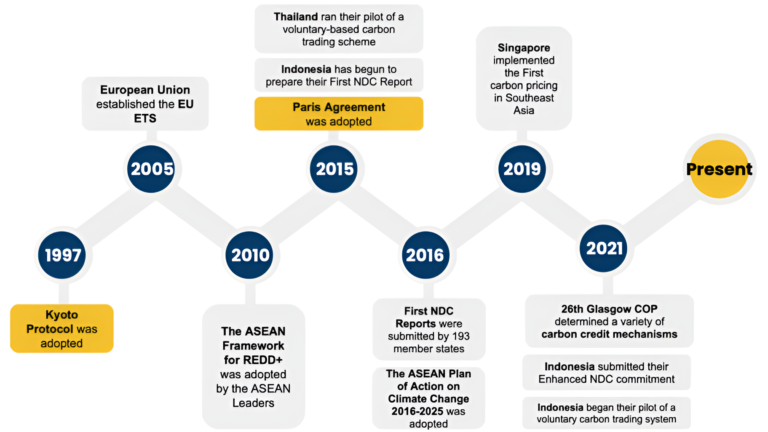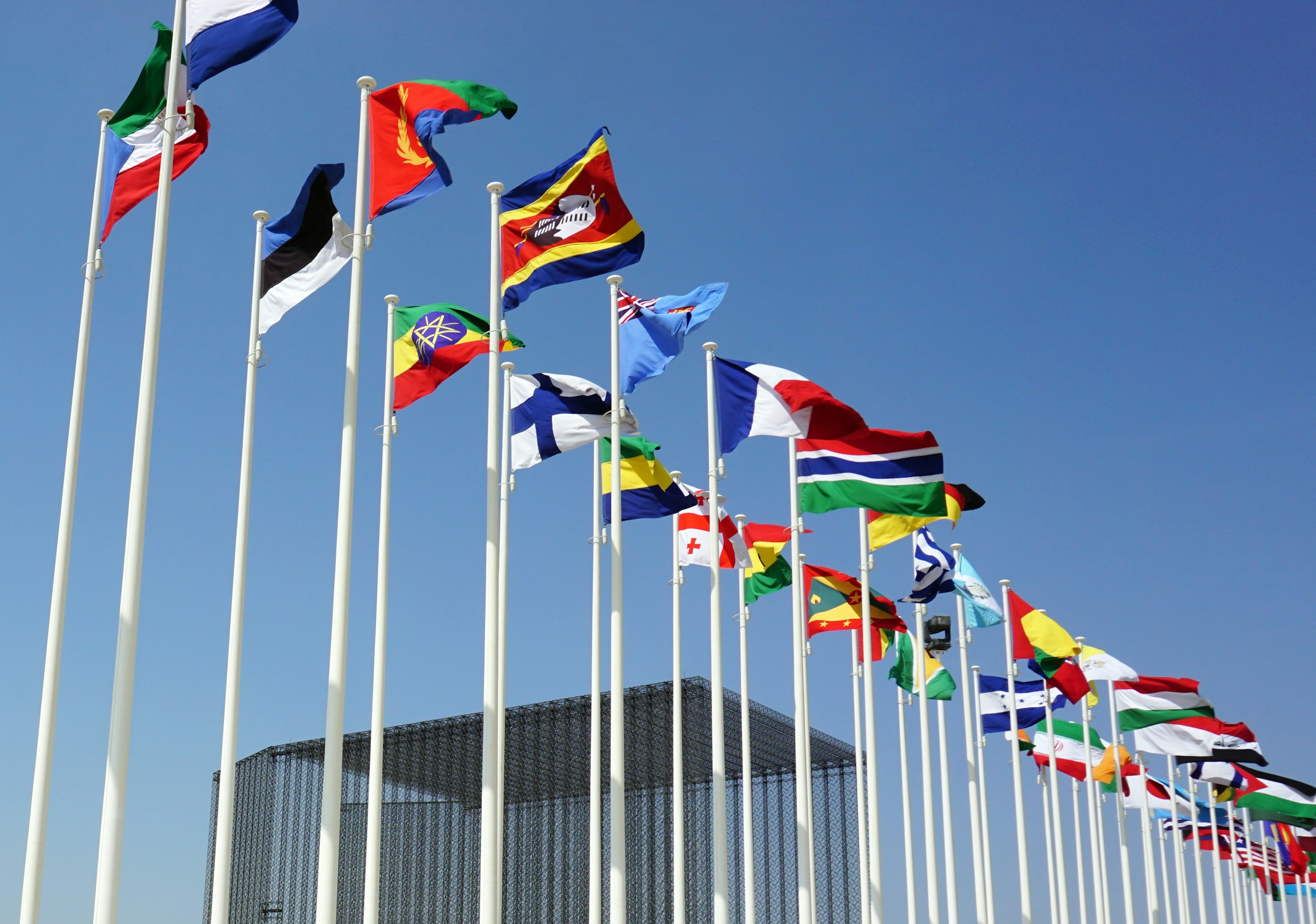Author:
IBC’s Team
13 August 2024
Developments regarding the Carbon Market or the procedure of Emissions Trading have been a point of discussion for nearly three decades. Initially brought forward within the United Nations Framework Convention on Climate Change (UNFCCC), the adoption of the first global commitment to the environment in 1997 was known as the Kyoto Protocol. The Kyoto Protocol stands as the cardinal binding of values and principles weighing the environmental responsibilities of States and economies in reducing GHG emissions through individual targets and emission trading. Article 17 of the Kyoto Protocol initially introduced the emission trading mechanism, which allows for States with sparred permitted emission units to sell the excess capacity to other States that are over their targets.
The emission trading scheme is intended to be an applicable climate policy instrument on global, regional, and national levels. In the early implementation phase, the European Union (EU) is the first entity to set a national cap on the GHG emission allowances through its National Allocation Plans (NAPs) among its member states. NAP was the initial milestone for the creation of the EU Emission Trading System (EU ETS).
Selected Milestones of the Global Development of Carbon Market

The international commitment to reducing GHG emissions in the Kyoto Protocol was further bolstered by the creation of the Paris Agreement, a legally binding international treaty on climate change at the UNFCCC Conference of the Parties (COP) 21 in 2015. The Paris Agreement has been adopted by 196 member states of the UNFCCC and established NDCs as a global instrument to measure respective progress towards limiting global temperature by 1.5°C by 2100. Article 6 of the Paris Agreement stipulates further on a way states can escalate their efforts in achieving the emission reduction targets, which are set out in the NDCs, through a voluntary collaboration through emission trading mechanism.
Since the Kyoto Protocol, commitments to reduce GHG emissions have been embedded and adopted in regional efforts. The EU was the first region to implement a carbon market mechanism in 2005, known as the EU ETS. This was followed by ASEAN Leaders introducing the ASEAN Framework for REDD+ in 2010. The ASEAN Framework for REDD+ pertains to Southeast Asia’s commitment to reducing regional GHG emissions through the Reduced Emissions from Deforestation and Forest Degradation (REDD)-Plus mechanism, as outlined in the ASEAN Leaders’ Statement on Joint Response to Climate Change.
In 2015, at the Paris COP21, the UNFCCC member states further reinforced their commitment to the Kyoto Protocol by establishing the Paris Agreement, which integrates economic, social, and environmental considerations. The Paris Agreement requires member states to submit NDC reports on a five-year cycle, with each NDC expected to make incremental progress towards higher and more measurable ambitions compared to the previous cycle. Article 6 of the Paris Agreement introduces extended schemes for carbon markets, including the Clean Development Mechanism (CDM).
Three specific agendas discussed in the Paris Agreement are located in Articles 6.2, 6.4, and 6.8. Article 6.2 emphasizes the voluntary intention in establishing cooperative approaches to mitigate outcomes towards NDCs with robust accounting systems, avoiding carbon credits double-counting. Secondly, Article 6.4 provides a model of collaborative GHG emissions through voluntary efforts under the guidance of COP, aiming for incentivization and facilitation of GHG emission mitigation, GHG emission voluntary trading in fulfilling NDCs, and global mitigation efforts. On the third agenda, Article 6.8 underlines the importance of establishing integrated, holistic, and balanced non-market approaches in enabling the capacities of the private sector. The Article promotes mitigation and enhancing participation from public and private sectors in supporting the NDCs fulfillment through incentivization and participation facilitation in supporting the State’s efforts for the fulfillment of NDCs.
”In the subsequent year, 2016, the COP recorded that 193 member states had submitted their first NDC commitments for the period spanning 2015 to 2020. During the first commitment period, Southeast Asian countries actively contributed to shaping their national efforts in achieving the predetermined NDC targets.
In the subsequent year, 2016, the COP recorded that 193 member states had submitted their first NDC commitments for the period spanning 2015 to 2020. During the first commitment period, Southeast Asian countries actively contributed to shaping their national efforts in achieving the predetermined NDC targets. The initial carbon market implementation was undertaken by Singapore in 2019 when the country established a carbon pricing scheme through carbon taxation. This was followed by various additional initiatives, including the establishment of independent carbon exchange platforms in the subsequent years. In recent developments, the UNFCCC reached an agreement that permits member states to employ a variety of carbon credit mechanisms to achieve their respective NDCs. The accord achieved at Glasgow COP26 has paved a way for countries to explore additional measures at the national level in supporting their NDCs achievement, which includes the empowerment of a carbon market.


